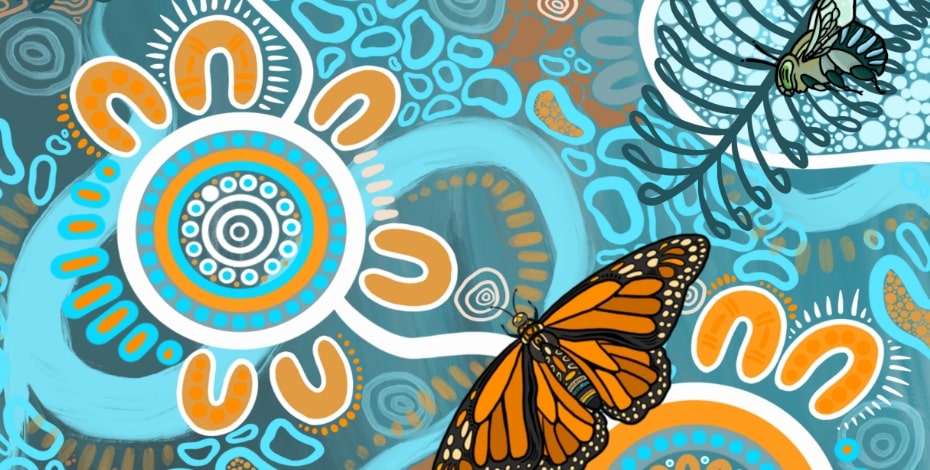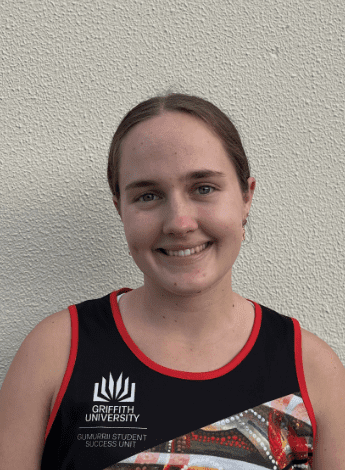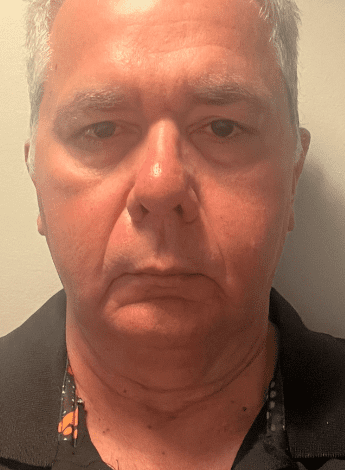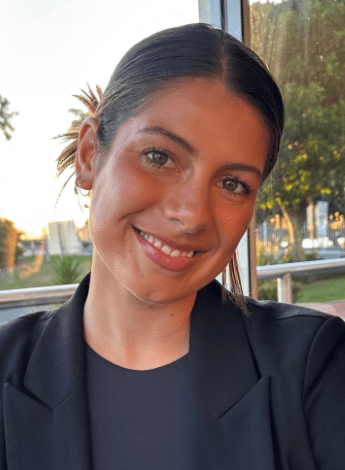
Scholarships for students

RECONCILIATION Four Aboriginal and Torres Strait Islander physiotherapy students have been awarded APA Aboriginal and Torres Strait Islander Physiotherapy Scholarships worth $5000. Melissa Trudinger talks to the recipients about their studies and their plans for the future.
Anna Moloney

Anna Moloney is studying physiotherapy at Griffith University.
Growing up in southern Queensland, Karingbal woman Anna Moloney was encouraged to pursue a career in health by her sister, who was studying nursing.
But nursing didn’t appeal—too much blood.
Anna was more interested in physiotherapy, in part because her father suffers from chronic back pain due to a motorcycle injury.
After completing high school, she applied to do exercise science at Griffith University as a stepping stone towards physiotherapy but was awarded a place in the physiotherapy program thanks to Griffith’s First Peoples Health Pathway.
Now in her third year, Anna is starting honours and gearing up for next year’s placement blocks.
She wants to do at least some of her training in a metro hospital environment but also to go out on placement in rural and regional Queensland, in places like St George, the small town she grew up in.
She plans to put some of her scholarship towards placement expenses.
Ultimately, Anna wants to return to regional Queensland to practise.
She knows firsthand the need for physiotherapists in regional areas and is also keen to bring physiotherapy services to regional Aboriginal and Torres Strait Islander communities.
‘In small towns like home, there will be a hospital but not a private practice.
‘Most of those towns will be more likely to have a hospital physio,’ Anna says.
‘By being someone that Indigenous people can trust, I think I can have a really good impact on their health.’
In the meantime, Anna is enjoying university life (she recently attended the Indigenous Nationals held at the University of Wollongong), studying hard and working as a receptionist in a physiotherapy practice and as a sports trainer for school sports.
‘I’ve been given an opportunity to study physio without having to go through a year of exercise science and I feel I should put in everything I’ve got.’
Grace Bowen

Grace Bowen is a student in the University of Sydney's physiotherapy program.
Grace Bowen got her first taste of physiotherapy as a junior athlete.
‘I’m honestly amazed by the way a physio can help get an athlete from a state of immobilisation after an injury back to a pre- injury state,’ Grace says.
Grace, whose grandmother was a Pitjantjatjara woman from Central Australia, grew up on Wiradjuri lands in Dubbo, New South Wales, and went to high school in Canberra on Ngunnawal lands.
She played netball for both New South Wales and the Australian Capital Territory from quite a young age.
Now a third-year student at the University of Sydney, Grace is finding her intention to become a sports physiotherapist challenged by interests in newly discovered physiotherapy specialties such as paediatric physiotherapy.
‘I’ve got strong aspirations to stick with sports but you never know—that’s the beauty of physio; you can move around,’ Grace says.
To support her studies, Grace works as a sports trainer with the Greater Western Sydney Giants AFLW team, among others.
This allows her to practise many of the skills—such as sports taping and massage—that she would use as a graduate physiotherapist and gives her exposure to the roles that physiotherapists play.
She’s also had experience as a trainer and athlete with the University of Sydney’s Indigenous Nationals team.
Grace intends to keep upgrading her skills through extracurricular courses, with plans for a sports nutrition course and a Graduate Diploma in Indigenous Health Promotion.
Ultimately, she wants to use her skills to help other Aboriginal and Torres Strait Islander athletes and communities.
Grace is keen to do at least one placement with an Aboriginal Medical Service and is passionate about providing a culturally safe environment for Aboriginal people seeking care.
‘I want to contribute to closing the gap and to help Indigenous people find equality in the healthcare system.
‘I want to make them feel safe and comfortable in an environment where they can speak up.’
Jason Jarro

Jason Jarro is studying physiotherapy at CQUniversity.
An Aboriginal man in his mid-50s from Iman-Ghungarri (Mother’s side) and Ghungalou-Wakka Wakka (Father’s side) countries in Queensland, Jason Jarro is probably the oldest first-year physiotherapy student in Australia.
His working life has revolved around sport for more than three decades—playing and coaching rugby league and working as a first aid officer and sports trainer.
More recently, he worked at Danila Dilba Health Service in Darwin as a trainee Aboriginal Health Practitioner.
With encouragement from his partner and from the Indigenous student unit at CQUniversity, Jason enrolled in the allied health program three years ago, allowing him to find his feet as a student before transferring to the physiotherapy program this year.
He’s already completed many of the required units as an allied health student and is now catching up on the physiotherapy-specific units.
‘There have been times when I’ve asked myself, why am I doing this?
‘But the support network I have at home, at work and at uni with my student colleagues is second to none,’ Jason says.
Jason also has a Queensland Health cadetship (via the AFL SportsReady program), which enables him to work with Wide Bay Hospital and Health Service in Bundaberg, honing his burgeoning physiotherapy skills in the workplace.
He’s not sure which direction he’ll go in when he graduates.
In addition to his experience and connections in sport, he’s also interested in working in Aboriginal communities at an Aboriginal Medical Service like Danila Dilba.
‘There’s not many blackfellas who are physios so to be a role model for the Aboriginal and Torres Strait Islander community—and for the wider community as well—is something I aspire to,’ Jason says.
He was ‘gobsmacked’ to find out he’d been awarded the APA scholarship recently.
‘I know this is an old cliché that we as Aboriginal people should not use but it made me feel like something—like I was actually wanted. I’m still in a state of disbelief.’
Paige Winder

Paige Winder worked as an exercise physiologist before enrolling in a Master of Physiotherapy at the University of Technology Sydney.
For Paige Winder, a degree in exercise physiology (EP) turned out to be a launch pad.
Physiotherapy sparked her interest from an early age but she decided to pursue EP, partly because she could study closer to her home in Sydney’s eastern suburbs.
‘One of my EP placements was at a physio clinic in Maroubra and I fell in love with the place.
‘As soon as I finished my degree, I went straight into a full-time role there, which was awesome.
‘But I was surrounded by physios as an EP and I felt my scope was a bit limited,’ Paige says.
So she applied to do a Master of Physiotherapy at the University of Technology Sydney.
Paige’s scholarship funding will go towards supporting her on placement, particularly next year.
She’s currently leaning towards musculoskeletal physiotherapy but has interests in areas as diverse as women’s pelvic health and respiratory physiotherapy.
A Walabunga woman from the Yuin Nation, Paige grew up near Sydney’s La Perouse Aboriginal community and has family ties there.
While studying EP, she and her sister set up a strength and conditioning program to help sports- focused Aboriginal teenage girls learn about correct training techniques and injury prevention.
More recently, she has helped her sister, a midwife, with the exercise component of a prenatal and postnatal program for Aboriginal women.
She is keen to keep working with the La Perouse community in addition to continuing with her current employers in private practice.
‘I’ve never had an Indigenous patient where I work and nor have many of my colleagues.
‘Even though I’m working 10 minutes away from La Perouse, I know that my aunties would not be interested in coming up to a private practice.
‘The best way for me to help out is to go there and that’s what I plan to do.’
COURSE OF INTEREST:
Australian Physiotherapy Council’s Cultural Safety Training for Physiotherapists
© Copyright 2025 by Australian Physiotherapy Association. All rights reserved.





